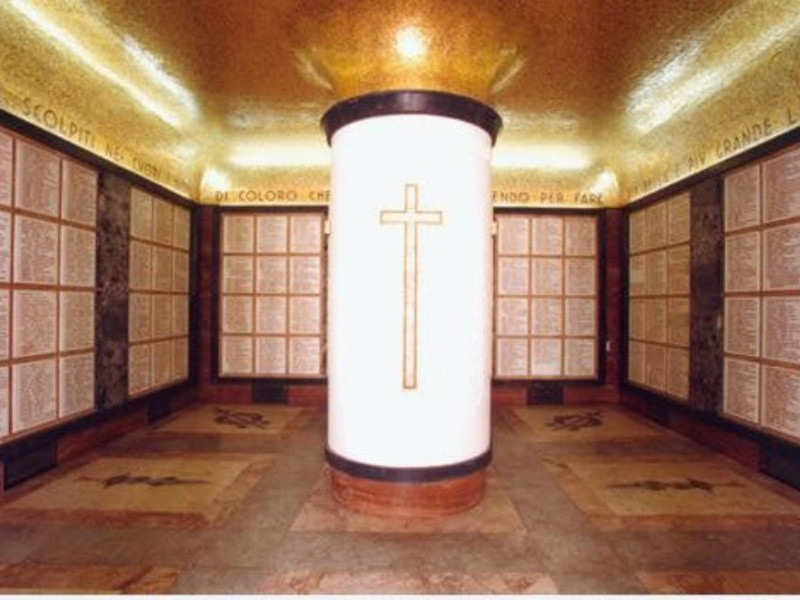Luogo - Point of interest
MAUSOLEO OSSARIO GARIBALDINO
Where
VIA GARIBALDI, 29/E, Roma
The Mausoleum Ossuary Garibaldi on the Janiculum rises in the locality called Colle del Pino, where between 30 April and the first days of July 1849, led by Giuseppe Garibaldi, took place the last staunch defense of the Roman Republic proclaimed February 9 of that year. Designed by architect John Jacobucci (1895-1970) and solemnly inaugurated on November 3, 1941, after two years of construction, the mausoleum contains the remains of those killed in the battles for Roma Capitale 1849-1870. Worthily The need to remember fallen to Rome was placed firmly in the aftermath of the taking of Porta Pia. In 1878-79 the same Menotti Garibaldi and his son were among the promoters of the law that recognized the Janiculum the place to pick up the remains of the patriots. He was then made the first burial on the basis of detailed surveys carried out to identify the bodies, some of which were buried in the Campo Verano, while those of 1870 were still buried on the sites of battles at the Walls. The idea of building a mausoleum was shot in the thirties of the 900 by Ezio Garibaldi, the son of Ricciotti, then president of the Society of Veterans Patrie Battles, entitled heroic grandfather, and a proposal to the government, which made her own and bear the costs .
At the center of a fenced area, an austere portico travertine, consisting of three arches on each side, and in an elevated position on a staircase, contains the core of the monument: an altar carved from a single block of granite Red Baveno, enhanced by allegorical figures inspired by Roman antiquity, including the wolf, the imperial eagle, shields and gladi. These motifs are repeated throughout the decoration of the Mausoleum.
At the corners of the quadrangle four pedestals travertine supporting as many bronze braziers decorated with wolf heads, which are still lit during the official celebrations. On pedestals are reminded of the most significant battles for the liberation of Rome: 1849 Ship, San Pancrazio, Palestrina, Velletri, Monti Parioli, the Villa Spada; 1862 Aspromonte; 1867 Monterotondo, Mentone, Villa Glori, House Ajani; 1870 Porta Pia, San Pancrazio.
On the back of the portico, a double flight of stairs down to the Shrine, closed by a massive bronze portal. The atmospheric environment is divided into two areas: a small vestibule with side apses and a square room, which has at its center a large circular pillar adorned with palm trees and votive crosses in alabaster. The vaulted ceiling is lowered covered in gold mosaic tiles; polychrome marble lining the floor and walls, on which are arranged niches closed from 36 plaques that recall the names of more than 1,600 heroic dead. In the niches are preserved only a few remnants (ca. 200), mostly anonymous, found during the various surveys. On the back wall there is the porphyry sarcophagus with the remains of Goffredo Mameli, the young Genoese poet, author of the hymn of Italy, wounded to death right on the Janiculum Hill in 1849 at age 22.




